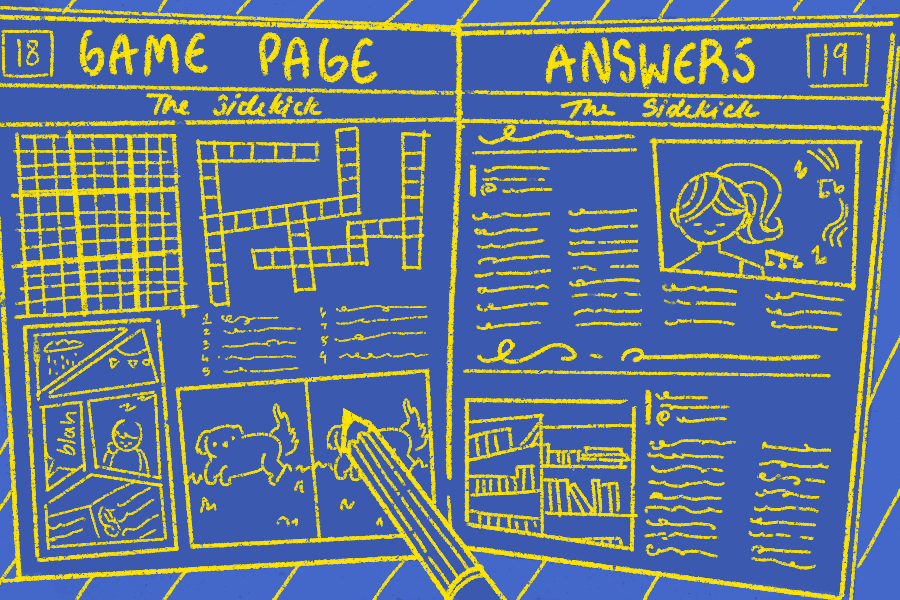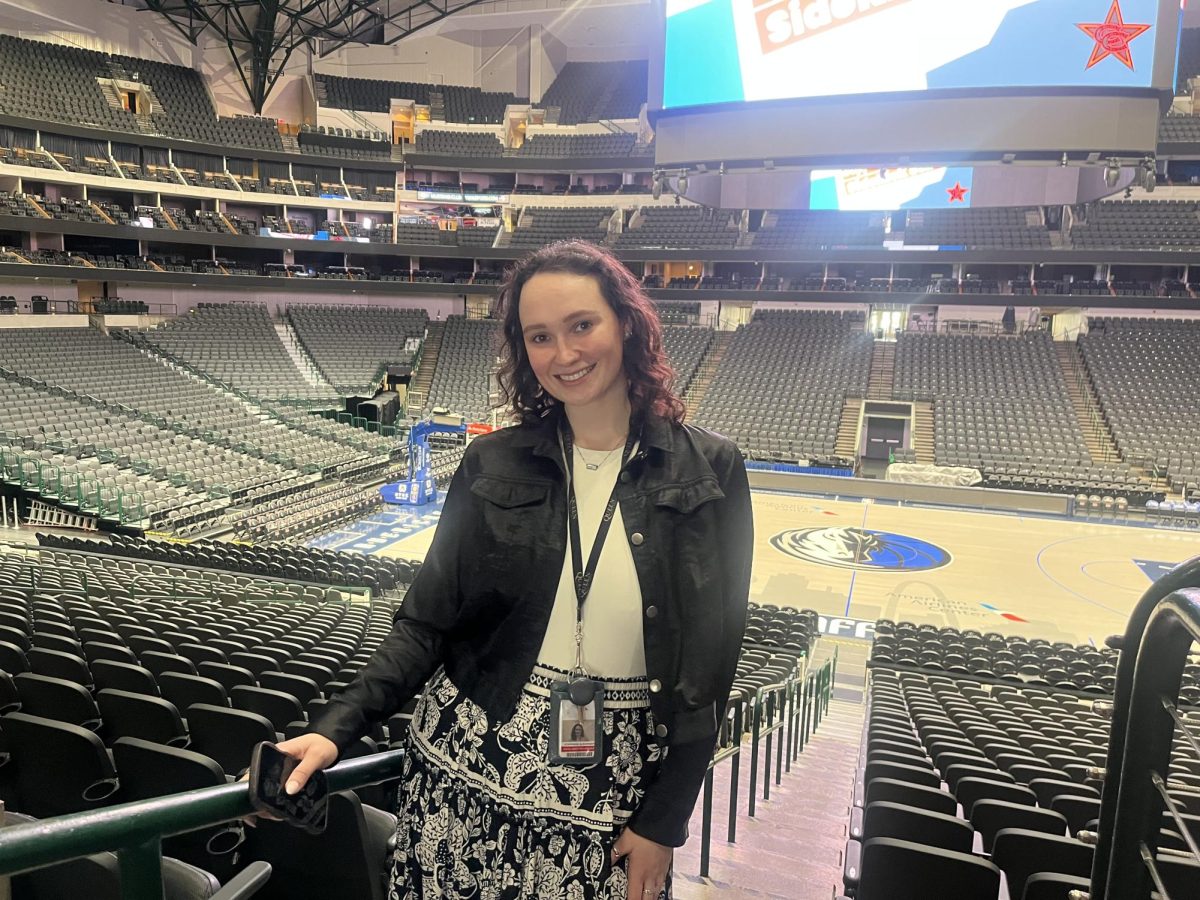Ashleigh Heaton
Editor-in-Chief
Mirrors. We see them every day. But it is not that we just see pieces of glass – it is the reflection inside that matters to us. Sometimes, we like what we see. But sometimes, we don’t – and some students will do anything to change it.
Currently, the “ideal image” for a woman is curvaceously thin and flawless, which is seen on the airbrushed photos of personally trained models and actors. Getting to that image realistically is difficult and sometimes impossible; however, some still try. Eating disorders, compulsive exercising and cosmetic surgery, as well as other methods of drastically altering one’s body, are not new concepts, but their effects are still as real as ever. We talked to three girls to share their stories of struggling with peer pressure, body image and self-acceptance.
Jennifer
2007 Coppell High School alum Jennifer (“Jenni”) Crater never liked her ears. As a member of the Lariette drill team, she would often feel self-conscious whenever she had to pull her hair back because she felt her ears stuck out too much. So, her sophomore year in high school, she decided to undergo otoplastic cosmetic surgery.
Originally, Crater only intended on pushing her ears back so they would lay closer to her head by putting in the Y-cartilage she lacked in her ears (known as ear pinning). However, during the initial consultation with her surgeon, she decided to also reduce the size of her concha (or ear hole) so her ears would appear more feminine.
Though the surgery went as planned, the following recovery process was not as smooth as Crater had anticipated.
“The recovery process was longer and more painful than I expected,” Crater said. “The pain lasted for a few days, but my ears were swollen and bruised for a couple weeks following the surgery. I had to be very careful during practice so they wouldn’t get hit or knocked while dancing and, initially, I was sensitive to loud noises.”
However, Crater was pleased with the end result and the confidence her new ears gave her.
“Having my ears pushed back made me look older – more my age, not like a child,” Crater said. “I feel more confident wearing my hair back or tucking my hair behind my ears. Before, I would never pull my hair back unless I had to but, since the surgery, I have enjoyed wearing it up.”
According to the American Society for Aesthetic Plastic surgery, in 2005 11.5 million surgical and nonsurgical cosmetic procedures were performed in the United States; plastic surgery alone has become a $15 billion industry. This total accounts for millions of people being dissatisfied with their appearances, no matter how many times they change it. Though Crater has only had the one procedure on her ears, she does admit it did not stop her insecurities.
“What [body] parts am I not insecure with? Chin, stomach, butt, underarms…the list changes daily depending on how I’m feeling and what I ate the night before,” Crater said. “I think a lot of people would like to change things about themselves. I look at myself almost everyday and see something that I would like to be different. The cycle is never-ending: fix one thing, find another flaw, fix it, find another.”
However, though she still has her insecurities, Crater doesn’t see herself undergoing any more cosmetic surgery in the near future.
“After this surgery, I realized that, while I am less self-conscious about my ears, it didn’t change who I am,” Crater said. “I have considered many times what surgery or procedure I could get to make me look better or feel better…but I don’t think I would ever go through with it.”
This isn’t the case with many Americans. The most common demographic prone to undergoing cosmetic surgery procedures are women between the ages of 35 and 50 trying to remain youthful, with the most popular procedures being rhinoplasty (nose jobs), liposuction and breast augmentation. However, plastic surgery amongst teenagers is on the rise – in the same surgical areas adult women use most often.
“If someone wants to have [excessive plastic surgery] done, then that’s their prerogative; it does bother me, though, when people have plastic surgery binges and tell everyone it’s natural,” Crater said. “When your skin is as tight as Barbie’s, it’s not natural. I think cosmetic surgery is a great tool that can be used to help people improve their image – but it can’t be abused.”
Megan
Exercise is essential for maintaining overall health – be it weight loss, respiratory and cardiac functions or muscle strength, routine exercise and staying active is important to keeping fit. But when is there too much of a good thing?
Megan* learned this lesson the hard way at the end of her sophomore year of high school when she succumbed to compulsive exercising. The CHS alum has been active for the majority of her life, but when she quit the high school and club volleyball teams she was involved in her sophomore year after playing for two years, she became concerned she would gain weight since she wasn’t working out for volleyball – especially with swim suit season in the near future. Family drove the topic home.
“I started feeling most insecure when my mom made a comment that I needed to be careful or I’d gain weight,” Megan said. “She didn’t mean it in a hurtful way, but it stuck with me. My mom has always been very fit, so I put a lot of pressure on myself when I compared myself to her.”
To compensate, Megan began working out in her own free time – but ended up over-exercising in an effort to remain thin. She went to the gym at least once a day if not twice, getting on to the elliptical for however long it took to feel the calories she’d consumed that day had been neutralized.
Megan rarely ever went to the gym with friends because she didn’t want anyone noticing how frequently she was going. Though always a healthy eater, it got to the point were a small amount of food was enough to have her racing to the gym, frantic to work it off.
“I began to feel guilty about every indulgence, even if it was just a Hershey kiss,” Megan said.
According to the Body Mass Index (BMI) chart, anything under a BMI of 18.5 is considered underweight and dangerous to a person’s health. At 5’9’’, Megan’s goal was to get down to 120 pounds – totaling to a BMI of 17.7.
Even though she had a goal, Megan’s true compass during this time in her life was the mirror. No matter what her scale said, if she didn’t like what she saw in the mirror, she would become distressed and begin crying.
“Physically, I was exhausted – my body was always wanting rest,” Megan said. “I stayed busy socially and with school, so the only time I really broke emotionally was at night in front of the mirror.”
Luckily for Megan, she was able to break the habit before any serious complications occurred by end of the summer, with the help of her friends and Christian faith.
“My relationship with God taught me that I needed to focus not on the scale and constantly exercising but on keeping my body healthy,” Megan said. “My boyfriend at the time, although he doesn’t know this, helped me tremendously in reshaping my self-image.”
Now in college, Megan has committed herself to eating correctly and exercising in moderation, her favorite activities being yoga and jogging.
“Every girl struggles with self-image to some degree, but I can honestly say that I never see myself reverting back [to over-exercising],” Megan said. “I am happiest when I feel healthy and, now, that involves eating right most of the time, but not heading to the treadmill immediately after a slice of cake.”
Compulsive exercising is a serious disorder closely linked with eating disorders, often considered a “non-purging” form of bulimia. Had Megan kept up with this lifestyle, she would have been at serious risk of being hospitalized. In retrospect, she thinks the support around her helped her get through her struggles – and encourages girls dealing with the same issues to do the same.
“[People struggling with self-image should] definitely turn to something bigger than you,” Megan said. “Focusing on something else takes that lack of control and puts it into something worthwhile. Friends are a great tool when you know you need help; just be sure to only turn to one or two that you can trust. High school can be the best time or the worst, and I went through it at both ends of the spectrum. The best I felt was when I stepped back and realized I had the power to choose joy.”
Alice
Alice* suffered from bulimia – however, there was a point in her life when she was dealing with both bulimia and anorexia at the same time, making it harder to find help.
Alice developed bulimia when she was in sixth grade, admitting that the motivation for her disorder was the lack of a strong self-image.
“Ever since third grade, my brother and mom have been like, ‘You’re fat, you’re fat, you’re fat,’ like, every day of my life,” Alice said. “It was that, and then with all the images you see in the media…I thought, ‘I have to be skinny, this is the only way I’m going to get there’.”
Before sixth grade, Alice moved to a new town in New Jersey, where she knew no one and didn’t make many new friends. Because of this, Alice suffered from depression during middle school as well as other issues, which only contributed to her disorder. Though she was seeing the school counselors for her depression, her family denied the problem even existing, ignoring her need for professional therapy.
“[The counselors] told my parents about [my depression], and [my parents] were like, ‘She doesn’t have depression. No one in our family has depression. No one in our family will ever have depression’,” Alice said. “They kind of just ignore things, so I can’t get help from anyone in my family.”
With this lack of help, Alice became friends with a group of girls at the school who were also bulimic – their version of a hang-out would include them eating as much as they could and then taking turns throwing up. Besides these friends, no one else knew of her condition.
Hiding it was easy for Alice. In most cases, a sudden decrease in dental health is a warning sign for bulimic tendencies; however, Alice used teeth-whiteners and was already prone to cavities, so her family didn’t take notice of any new cavities she developed during this time.
Alice’s goal at 5’7’’ was to be at 100 pounds – a BMI of 15.7, which is well in to the underweight category. When she didn’t see any significant weight loss, Alice began to develop anorexia on top of her bulimia in an attempt to lose more weight.
“[I was] hungry, all the time,” Alice said. “Then when I would have to eat for dinner, I would just get upset about that and then go and throw up. Some mornings I would throw up and just not go to school because my parents thought I was sick.”
Anorexia nervosa (or anorexia) is an eating disorder in which the sufferer denies themself or does not feel the need to eat food, developing from a mixture of psychological and emotional qualities. In Alice’s case, she only ate when she had to – and when she did eat, she immediately threw it up.
In eighth grade, Alice became strictly anorexic, not even attempting to eat anything. It wasn’t until ninth grade, when she moved to Coppell and was living alone with her mother in a small apartment, that she decided to take her recovery in to her own hands. Without any professional help, she forced herself to get better, locking herself in her room and playing video games whenever she felt the urge to make herself vomit.
“I really didn’t start recovering until ninth grade, because I was in the apartment with just my mom, so she would notice if I didn’t eat or if I was throwing up a lot,” Alice said. “I was kind of forced to eat. After that, I kind of got used to the fact that I need to eat more and my weight issue would hopefully take care of itself. I couldn’t hide it, so I decided to accept that fact.”
However, during her sophomore year – about a year after she had been seriously invested in her disorders – she began suffering from a serious form of diarrhea that included extremely painful digestive functions and did not stop for several months. She was bed-ridden for the majority of her summer, only able to move between her room and the bathroom.
“I had such horrible digestion issues for seven months that I dropped 30 pounds, and that’s so unhealthy,” Alice said. “It made me feel better, but the doctors said, ‘If this keeps continuing, we’re going to put you on fluids’.”
Though she is no longer denying herself food or forcing herself to vomit, it is still a challenge for Alice to not revert back to her old ways.
“It would be so much easier to just be anorexic again because then I wouldn’t have to worry about eating,” Alice said. “Some days I’ll eat a whole lot, and I’m like, ‘That’s totally going to my stomach. I can make this so much easier…’ but I don’t act on it.”
Despite her struggles, Alice is trying to better herself and develop a better self-image; she hopes that no one else has to suffer like herself.
“It’s not worth it,” Alice said. “It’s really, really not worth it. It may feel like it is, but it isn’t. For those struggling, tell a friend, especially if they eat lunch with you, they’ll notice and tell you, ‘Okay, you need to eat today’ or ‘You need to let it stay in your body because it’s better for you, you need the nutrients.’ Somebody needs to know.”
*Names have been changed for privacy








